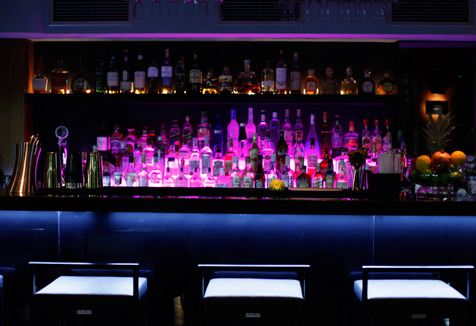Researchers investigate drinking, preloading and pill-popping
Researchers from the Institute for Culture and Society (ICS) and the School of Social Sciences and Psychology at the University of Western Sydney have played an integral role in a study which has measured the drinking levels of patrons in Australia's night-time entertainment districts.
Professor Stephen Tomsen and Phillip Wadds led the Sydney arm of the Patron Offending and Intoxication in Night-Time Entertainment Districts (POINTED) research project, funded by the National Drug Law Enforcement Research Fund (NDLERF).
Mr Wadds, a PhD candidate from ICS, led teams of research assistants into Kings Cross, Oxford Street, George Street and Darling Harbour in Sydney, to conduct interviews and surveys and measure the blood alcohol content (BAC) of late-night revellers.
The study was also conducted in areas of Melbourne, Perth, Wollongong and Geelong between November 2011 to June 2012. Across the research sites, almost 7000 patrons were interviewed and 6500 agreed to BAC tests.
Mr Wadds says the results of the study, which were launched in a report by the NDLERF in March, revealed some interesting trends in drinking habits from city to city.
"All five cities experienced the same general issues related to pre-drinking and the consumption of energy drinks. Consistently across the study, we also saw a high correlation between later trading hours and higher levels of intoxication," says Mr Wadds.
"As expected, it was found that levels of intoxication increased throughout the night. The average BAC of the tested patrons was 0.54. By 4am, the levels of intoxication greatly increased with 35% of patrons registering a BAC over 0.10.
"While this is not a surprising trend, Australian levels of intoxication were significantly lower than those from a similar study in the UK which uncovered a much higher average BAC."
Despite all cities facing the same general issues, Mr Wadds says a closer look at the data reveals some interesting geographical differences – with Sydney coming out on top, as the city showing the lowest levels of intoxication.
"Sydney has the lowest average BAC rates of all research sites throughout Australia, whereas Melbourne and Perth showed the highest average BAC levels," says Mr Wadds.
"Sydney also fares better in regards to levels of pre-drinking, with only 52% admitting to drinking at home before they attend licensed venues, compared with 81% of patrons in Geelong and 80% in Perth."
Mr Wadds says, given that many patrons travel from all over the state to experience inner city nightlife, distances travelled may influence the levels of pre-drinking.
"Because people have to travel so far, it is likely that they will pre-load on the way in to the city to make sure they 'hit the ground running' and are not sober on arrival," he says.
Professor Tomsen, who is based in the UWS School of Social Sciences and Psychology as well as ICS, says it was surprising to find that drinking levels weren't higher, and suggests that these findings may relate to how busy Sydney is after dark and the wide range of recreational pursuits that are available.
"The slightly lower overall levels of intoxication in Sydney could relate to the scale of large and mixed groups of people in the city at night," says Professor Tomsen.
"These people may be spending their nights dining in cafes and restaurants, visiting games arcades and cinema complexes, going to shows at the theatre, or attending music concerts, and may therefore consume less alcohol than someone spending the night at a pub or club."
Professor Tomsen also noted that, as the survey focused on asking people about pre-drinking at home, work or in other private locations such as motels and hotels, people may have unintentionally not divulged their tendency to pre-drink in pubs and clubs.
"Because Sydney is such a large city and is hard to negotiate for a night out, it seems many people choose to begin to 'pre-load' at more low-key venues such as pubs and clubs on the edge of the city," says Professor Tomsen.
"We should not think of pre-drinking as a lesser issue here in Sydney, as it may be the case that it's just less home-based."
A finding that is more difficult to explain, and that the UWS researchers are keen to investigate further, is that a high number of Sydney patrons self-reported the use of substances other than alcohol, including cannabis, amphetamines and ecstasy. These results were corroborated by research staff who confirmed Sydney as the Australian site with the highest recorded use of ecstasy.
Drug use was particularly high among the 18-25 year old cohort, particularly in areas such as Kings Cross – which the researchers note, are probably short term and experimental drug-users rather than long term and habitual users.
"I think the relationship between higher ecstasy-use among younger groups of revellers is most likely related to the price of a night out in Sydney," says Mr Wadds.
"One pill, which will likely last 4 hours, at $20-$30 can lessen the expense of a night out on the drink which can cost upwards of $300."
Ends
27 May 2013
Contact: Mark Smith, Media Officer
Mobile options:


